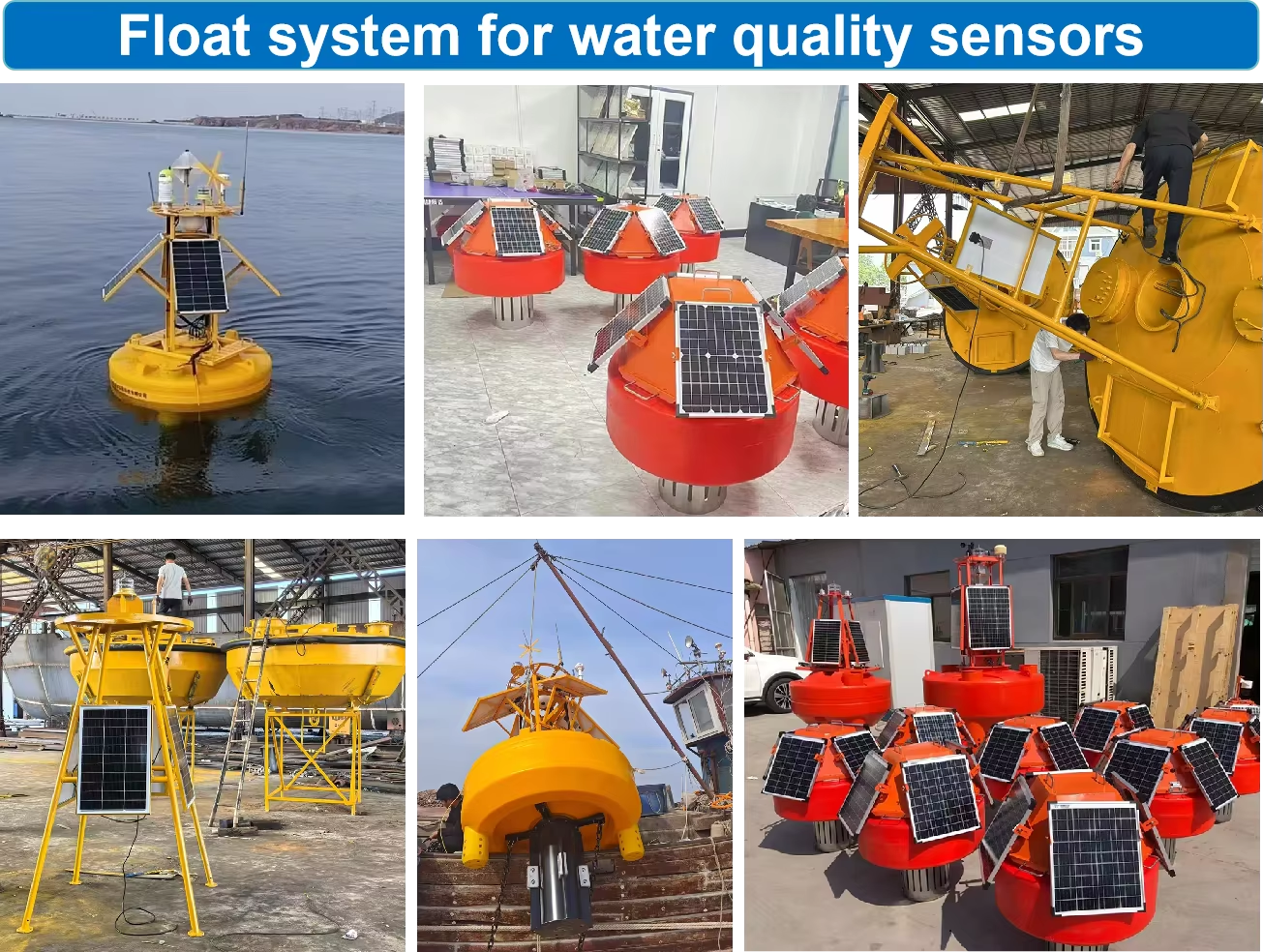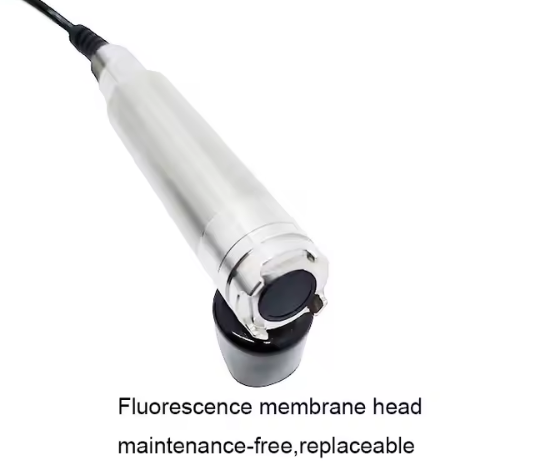Ubuchwepheshe be-Optical dissolved sensing oxygen bushintsha ukukhiqizwa kwezolimo emhlabeni wonke ngezindlela ezingakaze zibonwe ngaphambili. Leli phepha libuyekeza ngokuhlelekile izimo zokusetshenziswa kwalobu buchwepheshe obusha kwezolimo zasemanzini, ukuphathwa kwamanzi okunisela, ukuqapha impilo yenhlabathi, kanye nezolimo olunembayo, lihlaziya ukuthi ukuqapha komoya-mpilo oncibilikisiwe ngesikhathi sangempela nokunembile kungathuthukisa kanjani umkhiqizo wezolimo, kuqinisekise ukuvikeleka kokudla, futhi kukhuthaze intuthuko esimeme.
Uhlolojikelele Lwezobuchwepheshe kanye Nenani Lezolimo
Ubuchwepheshe be-Optical dissolved oxygen sensing bumele impumelelo enkulu yesayensi esekelwe kumgomo wokucisha i-fluorescence, ukuguqula izindlela ezivamile zokuqapha umoya-mpilo oncibilikisiwe. Lapho ukukhanya kobude obuthile obuthile bukhanyisa ulwelwesi oluzwelayo lwe-fluorescent, ama-molecule e-oxygen ashintsha izici zesignali ye-fluorescence, okuvumela izinzwa ukubala ngokunembile ukugcwala komoyampilo oncibilikisiwe ngokuthola lezi zinguquko. Uma kuqhathaniswa nezindlela ezijwayelekile, ubuchwepheshe be-optical bunikeza izinzuzo ezibalulekile ezihlanganisa izinto ezingasetshenziswa, ukusebenza okungenakulungiswa, amandla aqinile okumelana nokuphazamiseka, nokuzinza kwesikhathi eside, okwenza bufaneleke ngokukhethekile ezindaweni zezolimo eziyinkimbinkimbi neziguquguqukayo.
Ezinhlelweni zokukhiqiza ezolimo, umoya-mpilo oncibilikisiwe uyipharamitha ebalulekile yezemvelo ethinta ukukhula nokuthuthuka kwezitshalo nezilwane. Ucwaningo lubonisa ukuthi ukugcwala komoyampilo oncibilikisiwe emanzini kuthonya ngqo amandla ezimpande zezitshalo, umzimba wezilwane zasemanzini, kanye nomsebenzi womphakathi wamagciwane. Inani lobuchwepheshe benzwa ye-oxygen encibilikisiwe lilele emandleni abo okuthwebula ngokunembile lezi zinguquko ezibalulekile ngesikhathi sangempela, okuhlinzeka ngesisekelo sesayensi sokuthatha izinqumo kwezolimo.
Izicelo Revolution in Aquaculture
I-Intelligent Early Warning Systems Evimbela Izinhlekelele Zokulima
Esizindeni se-aquaculture yasolwandle, isistimu yokuzwa komoyampilo encibilikisiwe ye-optical yaxwayisa ngempumelelo ngezingozi ezingaba khona ze-hypoxia. Abalimi bathola izexwayiso eziphuthumayo emishinini yabo ephathwayo futhi ngokushesha bathatha isinyathelo, bagwema ukulahlekelwa okukhulu kwezomnotho. Leli cala lembula ukulinganiselwa kwezindlela zokulima zendabuko - inkinga ye-oxygen yasebusuku. Amasistimu enzwa wamehlo azuza ukubikezelwa kwengozi ngokuhlaziya okuhlakaniphile okunezinhlangothi eziningi:
- Ukufunda iphethini yomlando: Ukuhlonza isigqi se-diurnal kanye namaphethini womthelela wesimo sezulu
- Ukuhlaziywa kokuhlobana kwemvelo: Kuhlanganisa izinga lokushisa lamanzi, ukucindezela komkhathi kanye nolunye idatha ukulungisa ukubikezela
- Impendulo yokuziphatha kwebhayoloji: Ukubikezela ubungozi be-hypoxia ngoshintsho lomsebenzi wezinhlobo ezifuywayo
I-Precision Oxygenation Idala Izinzuzo Zezomnotho
Ukuhlola okuqhathanisayo kubonise ukuthi izisekelo ze-aquaculture ezisebenzisa inzwa yokubona ehlanganiswe namasistimu okukhipha umoya-mpilo ahlakaniphile azuze izilinganiso zokuguqulwa okuphakelayo ezithuthuke kakhulu. I-Intelligent System isebenza ngokulandelayo:
- Izinzwa zamehlo eziqaphayo zihlakaze ukugcwala komoyampilo ngesikhathi sangempela
- Ukunciphisa ngokuzenzakalelayo imvamisa ye-aerator lapho umoya-mpilo oncibilikisiwe weqa imikhawulo ebekiwe
- Ukwenza kusebenze okokusebenza kwe-oksijini okuyisipele lapho umoya-mpilo oncibilikisiwe usondela emazingeni abalulekile
Lokhu kulawula ukunemba kugwema ukumosheka kwamandla okuhambisana nezindlela zendabuko. Idatha yokusebenza ibonisa ukuthi amasistimu ahlakaniphile anganciphisa kokubili ukuchithwa komoyampilo kanye nezindleko zamandla.
Ukuthuthukisa Impumelelo Ekucheleleni Kwezolimo kanye Nezinhlelo Ze-Hydroponic
Umthelela Wesayensi Womoya Oyizincibilikisiwe Ekukhuleni Kwezitshalo
I-oxygen encibilikisiwe idlala indima ebalulekile ekukhuleni nasekuthuthukisweni kwezitshalo. Ukuhlolwa okulawulwayo kwemifino kubonise ukuthi lapho amanzi okunisela ancibilika umoya-mpilo akhushulwa emazingeni afanele, izinkomba zokukhula eziningi zaba ngcono kakhulu:
- Ukuphakama kwesitshalo kanye nendawo yamaqabunga
- Izinga le-photosynthetic elithuthukisiwe
- Okuqukethwe kwevithamini okuphezulu
- Isivuno esithuthuke ngokuphawulekayo
Ngaleso sikhathi, okuqukethwe kwe-nitrate kwehlile, okwathuthukisa kakhulu ikhwalithi yemifino nokuphepha.
Izinhlelo zokusebenza ezididiyelwe kuma-Smart Irrigation Systems
Inhlanganisela yobuchwepheshe be-optical dissolved sensing oxygen nezinhlelo zokuchelela ezihlakaniphile yenze amamodeli amasha okulawulwa kwamanzi ezolimo. Endaweni edidiyelwe ye-rice-aquaculture, isistimu yokulima ehlakaniphile ehlanganisa izinzwa zomoya-mpilo ezincibilikisiwe zathola ukuphathwa kwekhwalithi yamanzi okunembayo. Isistimu ivame ukuqoqa amapharamitha angukhiye futhi icuphe ngokuzenzakalelayo izexwayiso nokulungiswa kwemishini lapho kutholwa okudidayo.
Izinhlelo zokusebenza ezisebenzayo zibonisa ukuthi lezi zinhlelo ezihlakaniphile zifinyelela izinjongo ezimbaxambili zokukhula kwesivuno/ikhwalithi kanye nezindleko/ukusebenza kahle kwamandla:
- Isivuno esithuthukisiwe kanye nekhwalithi yezinhlobo zezilwane zasemanzini
- Isivuno esizinzile sihlangabezana nezindinganiso eziluhlaza
- Ukwehliswa kwezindleko zabasebenzi kanye nezinzuzo eziphelele ezithuthukisiwe
Amasu Okuqanjwa Kwempilo Yomhlaba kanye Nokuqapha Imvelo Ye-Rhizosphere
Ukubaluleka Kwezolimo Kwemvelo Ye-oksijeni ye-Rhizosphere
Izinga le-oxygen encibilikisiwe ku-rhizosphere yezitshalo lithonya kakhulu impilo yezitshalo, lithinta ngokuqondile:
- Ukuphefumula kwezimpande kanye ne-energy metabolism
- Ukwakheka nokusebenza komphakathi we-Microbial
- Ukusebenza kahle kokuguqulwa kwezakhi zomhlabathi
- Ukuqoqwa kwezinto eziyingozi
Ukuphumelela kwezicelo ze-Planar Optode Technology
Ubuchwepheshe be-Planar optode bumele uhlelo olusha lwenzwa ye-oksijini encibilikisiwe ekuqaphelweni kwenhlabathi. Uma kuqhathaniswa nezilinganiso zamaphuzu zendabuko, ama-optodes aplanar anikeza lezi zinzuzo:
- Ukulungiswa kwendawo ephezulu
- Isilinganiso esingahlaseli
- Ukuqapha okuqhubekayo okunamandla
- Amandla okuhlanganisa amapharamitha amaningi
Olunye ucwaningo olusebenzisa lobu buchwepheshe lwembula ngokucacile ukusatshalaliswa kwegradient komoya-mpilo ku-rhizosphere yezitshalo, okuhlinzeka ngesisekelo sesayensi sokunisela okunembayo.
Ukuhlolwa Kwempilo Yomhlabathi kanye Nokuthuthukiswa Kokuphatha
Ubuchwepheshe bokuqapha i-oxygen encibilikisiwe busetshenziswa kabanzi ekuhlonzweni kwempilo yenhlabathi kanye nokwenza kahle kokuphatha. Izinhlelo zokusebenza ezithize zifaka:
- Ukuhlola ukungena komoya komhlabathi kanye nokuhlonza izingqimba zezivimbi
- Ukuthuthukisa ukuchelela okusekelwe emaphethini okusebenzisa umoya-mpilo
- Ukuqapha izinqubo zokubola kwezinto eziphilayo
- Isixwayiso sokuqala sezifo zezimpande
Epulazini lamazambane, lobu buchwepheshe buye basiza ekuboneni izingqimba ze-hypoxic ekujuleni kwenhlabathi. Ngezinyathelo zokuthuthukisa, isivuno senyuke kakhulu.
Izinselelo zobuchwepheshe kanye namathemba okuthuthuka
Nakuba ubuchwepheshe be-optical dissolved sensing oxygen bubonise amandla amakhulu, ukusetshenziswa kwabo kwezolimo kusabhekene nezinselelo ezimbalwa:
- Izindleko zezinzwa zihlala ziphezulu kubalimi abasafufusa
- Ukuzinza kwesikhathi eside ezindaweni zezolimo eziyinkimbinkimbi
- Isidingo sobungcweti bokuhumusha idatha
- Ukuhambisana nokuhlanganisa nezinye izinhlelo zezolimo
Amathrendi entuthuko yesikhathi esizayo afaka:
- Izixazululo zenzwa ezingabizi kakhulu
- Ukuhlaziywa kwedatha okuhlakaniphile nokusekelwa kwezinqumo
- Ukuhlanganiswa okujulile nobuchwepheshe be-IoT ne-AI
- Uchungechunge lomkhiqizo luguqulelwe ezimweni zezolimo ezahlukahlukene
Ngokuthuthuka kwezobuchwepheshe nolwazi oluqoqiwe lwezicelo, ubuchwepheshe be-optical dissolved oxygen sensing kulindeleke ukuthi budlale indima ebalulekile ekusimameni kwezolimo emhlabeni wonke, buhlinzeke ngosekelo oluqinile lokuthuthukisa ukukhiqiza kwezolimo, ukuqinisekisa ukuvikeleka kokudla, nokuvikela indawo ezungezile.
Futhi singahlinzeka ngezixazululo ezahlukahlukene
1. Imitha ephathwa ngesandla yekhwalithi yamanzi enepharamitha eningi
2. Isistimu ye-Buoy entantayo yekhwalithi yamanzi enepharamitha eminingi
3. Ibhulashi lokuhlanza okuzenzakalelayo lenzwa yamanzi yepharamitha eminingi
4. Isethi ephelele yamaseva nesoftware engenantambo, isekela i-RS485 GPRS /4g/WIFI/LORA/LORAWAN
Sicela uthinte i-Honde Technology Co., LTD.
Email: info@hondetech.com
Iwebhusayithi yenkampani:www.hondetechco.com
Ucingo: +86-15210548582
Isikhathi sokuthumela: Jul-18-2025



